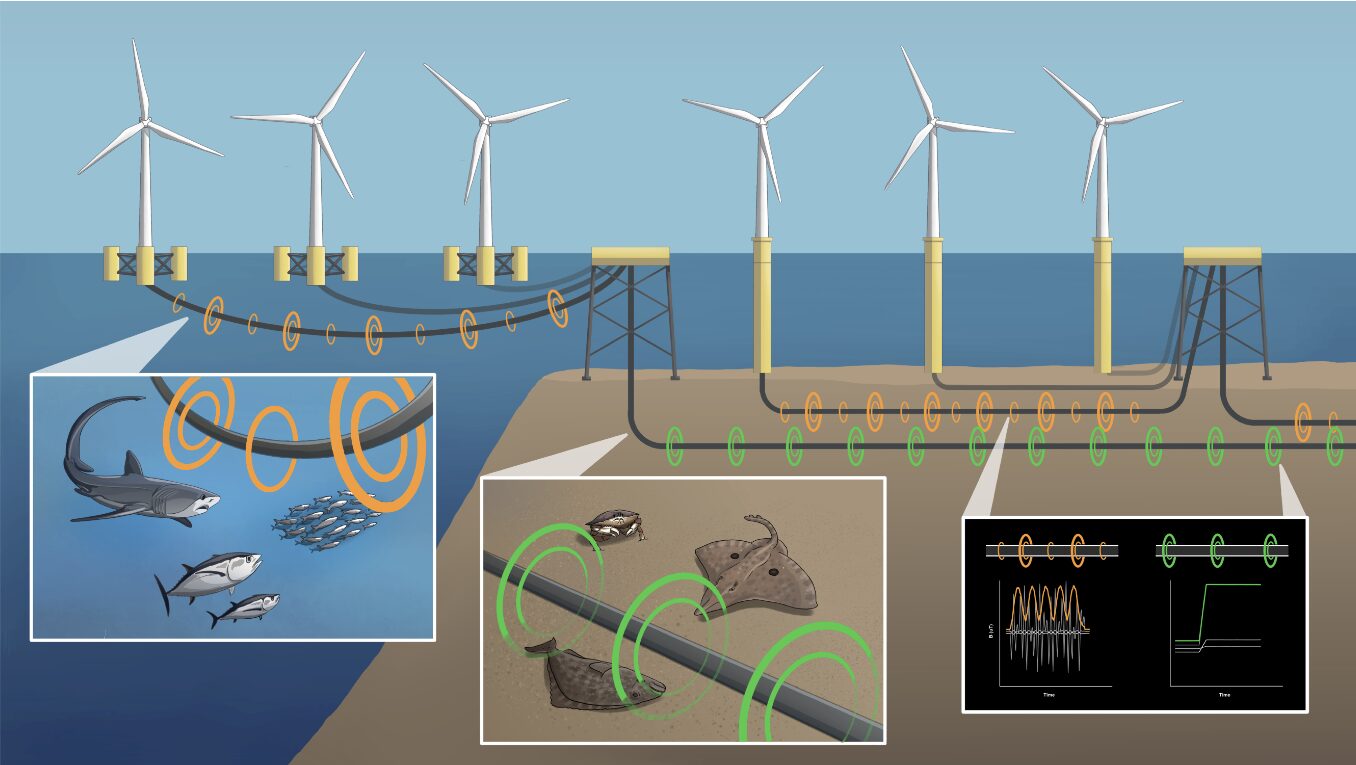What is EMF and why might it be a big deal?
To meet the growing energy demands of a burgeoning human population, mitigate the impact of human activities on our climate, and ensure energy security, many governments are investing in renewable energy technologies to provide cleaner energy alternatives, diversify their sources of energy, and utilise untapped or underutilised resources within their own borders. In the marine sector, the kinetic energy from wind, waves, currents, and tides can be converted into electricity by devices located offshore then transported onshore through high voltage subsea cables.
As electric current runs through a subsea cable, or an electrical wire in your house, it creates a magnetic field that radiates away from the cable or wire and into the surrounding environment.
Thus, the term EMF or electromagnetic field. The strength of an EMF is directly proportional to the amount of current running through the cable. The current, and the EMF, can fluctuate rapidly over time (i.e., AC, alternating current) or remain constant (i.e., DC, direct current).
This contrasts with the magnetic field generated by the iron core of the earth, which is called a geomagnetic field, or GMF. The poles of the GMF align with the opposite poles of a compass needle and allow humans and many animal species to maintain a particular heading while navigating through unfamiliar locations. The strength of the GMF changes predictably with latitude which allows many animals to use the GMF to get a sense of their present location in a manner like how humans use a map on their smartphone.
So why might EMF be a big deal? Well, it is likely that EMF from energised subsea cables will interact with the GMF within the immediate vicinity of the cable. This could potentially interfere with the navigation abilities of magnetically sensitive animals, like sharks, skates, and rays, as they move through habitats containing several subsea cables.

Diagram demonstrating the electromagnetic fields (EFS) that are emitted from electrical wires, such as deep-sea cables, which have the potential to impact marine creatures. Diagram © Kyle Newton
Understandably, these electromagnetism concepts in physics are unfamiliar to most people thus it is easy for them to be misinformed or misled. However, these magnetic fields can be easily detected in our environment by downloading an appropriate app (e.g., Physics Toolbox Sensor Suite) that allows you to access the data collected by the sensors, such as the magnetometer, inside your smart phone. Once installed, you can see the strength and direction of EMFs emitted by active electrical wires, the GMF in nature, and compare their values to common household items like a refrigerator magnet.
Thus, the primary motivation behind my research project funded by the Save Our Seas Foundation is to understand if anthropogenic, or human created, EMFs might impact the behaviour of magnetically sensitive sharks, skates, and rays. If so, then we need to understand if EMF might cause temporary or long term changes in their behaviour, or cause changes to the physiology of an animal at the genetic or cellular level. Only by understanding the underlying biological mechanisms could we begin to mitigate the potential impact that anthropogenic EMFs might have on marine species.
